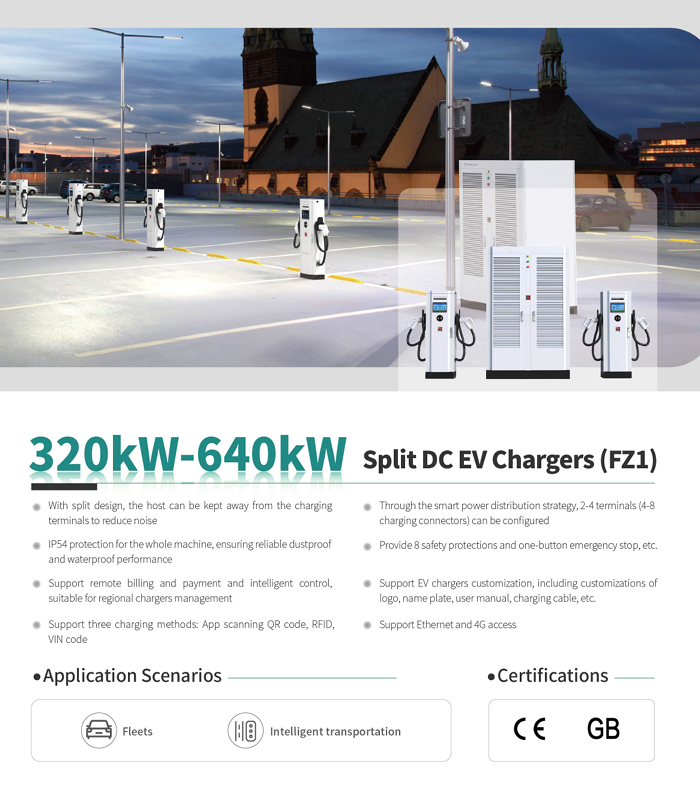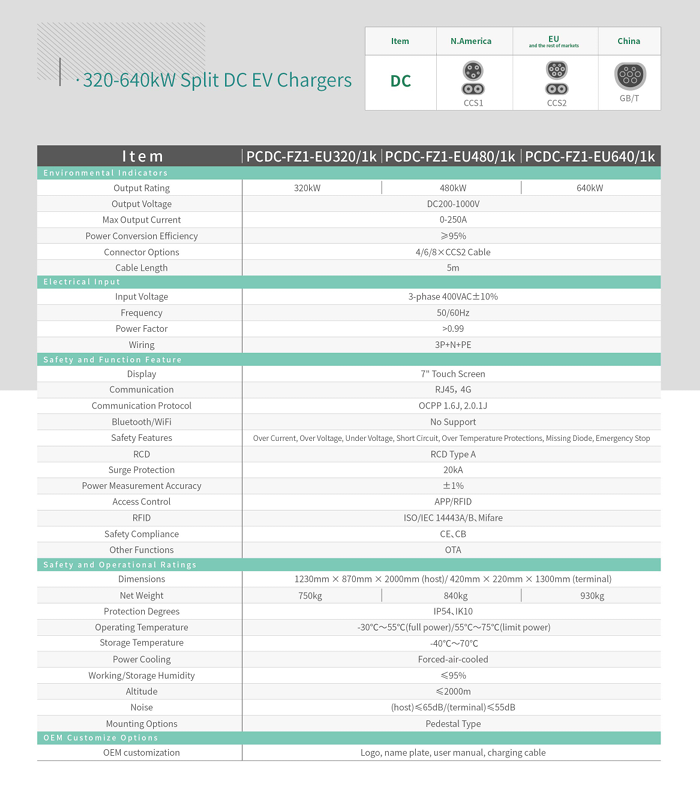| Brand | Pingalax |
| Model NO. | DC 320-480-640KW EV Chargers |
| Rated Output Rating | 320KW |
| Output Voltage | DC 200-1000V |
| Max Output Current | 250A |
| Power Conversion Efficiency | ≥95% |
| Connector Options | CCS2 |
| terminals | eight gun |
| Series | DC EV Chargers |


What are the means of grounding protection for EV chargers?
Main Technical Means of Grounding Protection
Grounding Conductor:
Definition: A grounding conductor refers to a wire used to connect the metal enclosure of an electrical device to the earth.
Function: When an electrical device has a leakage, it provides a low - impedance path so that the leakage current can quickly flow to the earth.
Grounding Electrode:
Definition: A grounding electrode refers to a metal rod or metal plate buried underground, which is used to form a good electrical connection with the earth.
Function: It provides a stable grounding reference point to ensure the effectiveness of the grounding system.
Ground Resistance:
Definition: Ground resistance refers to the resistance between the grounding electrode and the earth.
Standard: The ground resistance usually needs to meet certain standard requirements. For example, it should not be more than 4 ohms (the specificvalue varies according to the regulations of different countries and regions).
Measurement: Regularly measure the ground resistance to ensure it is within the qualified range.






